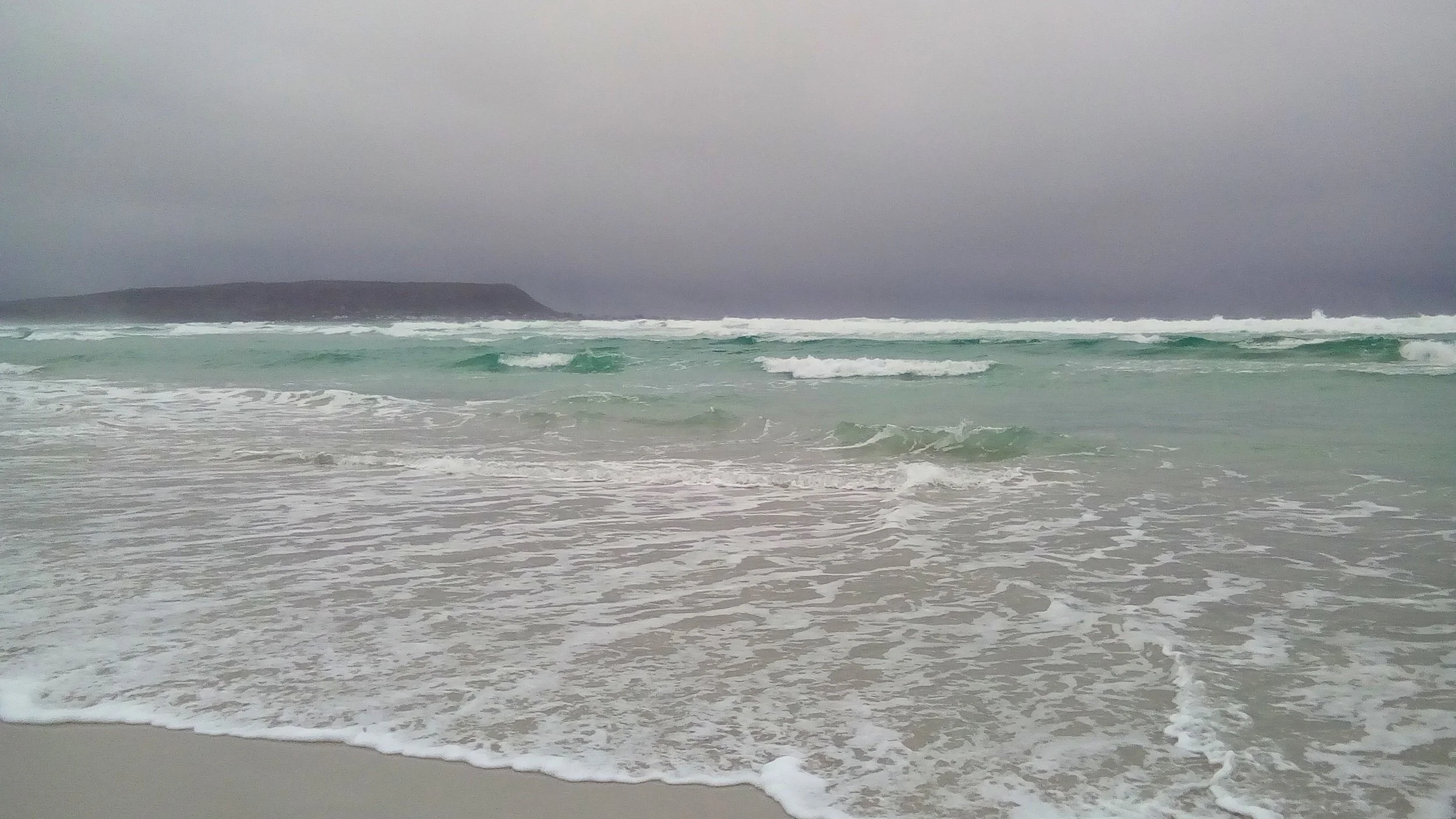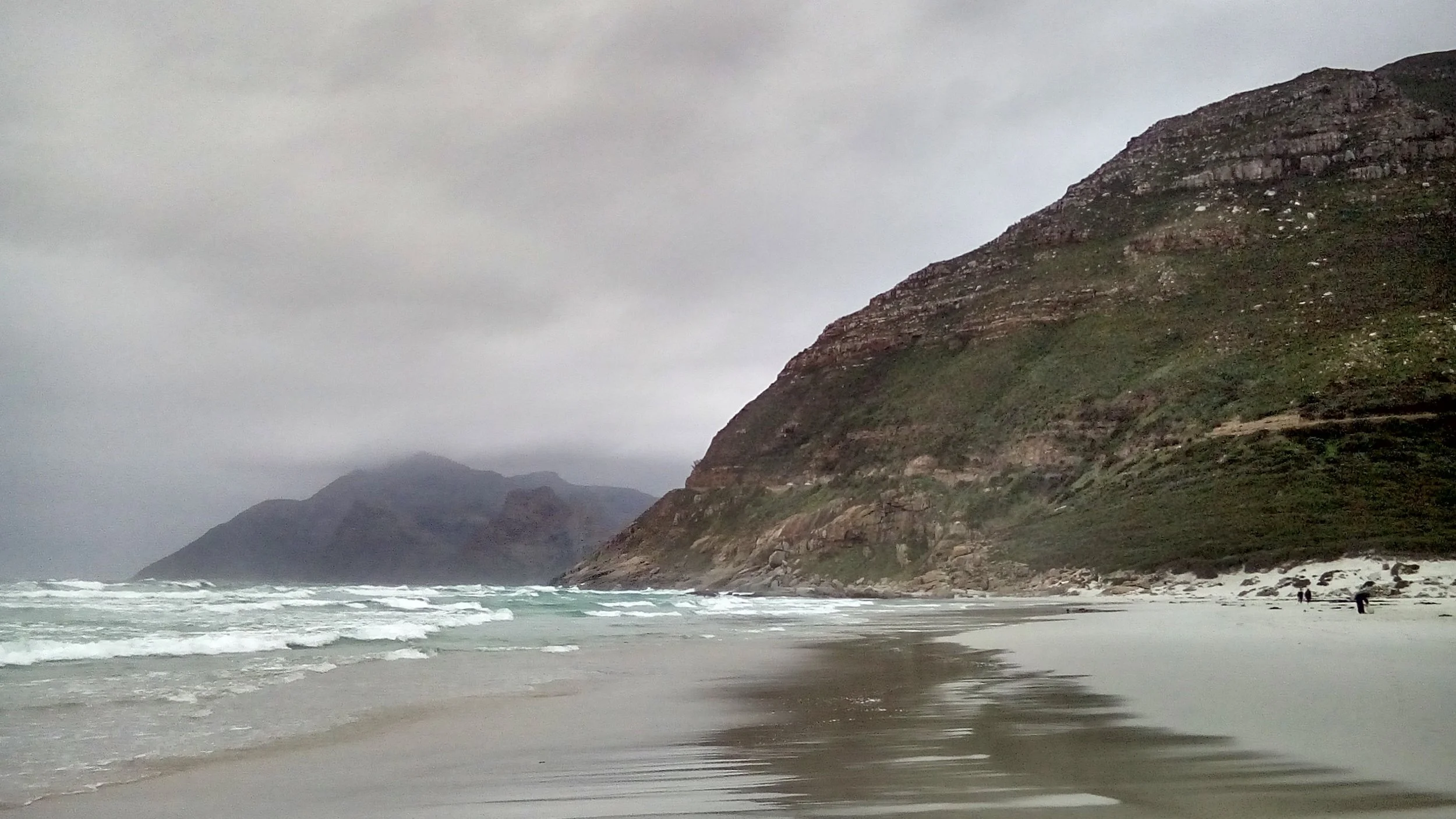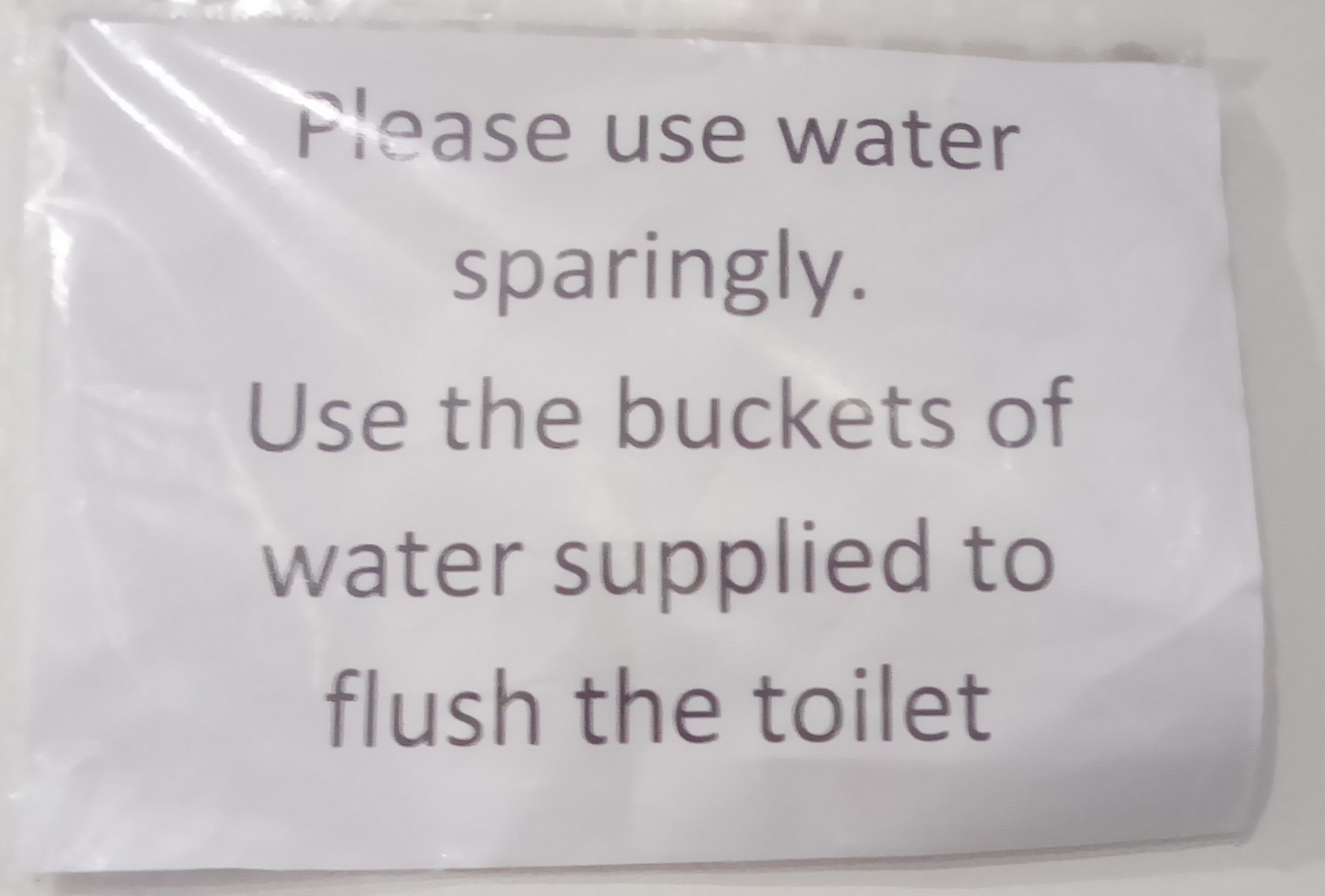The life-giving, life-saving rain -- exactly the right kind -- soft, steady, soaking -- is falling in abundance from the skies, once parched parts of the Western Cape are verdantly green, the Big Six dams are standing at 42% capacity, with the grand-daddy of them all, Theewaterskloof, almost nudging 30% (remember, this serves over half of Cape Town, a long way to go still) -- so here come the silly headlines again. For instance, "Cape's water crisis comes to a miraculous end" -- or so says the CEO of Cullinan Holdings in a piece that begins "A miraculous increase in dam levels in one month with improved winter rains and a 50% savings in daily water usage in the Western Cape effectively sees the end of the [sic] Cape Town’s severe drought."
Um, no. (I'll explain below.)
But far more irresponsible is the CoCT's announcement of no Day Zero for 2019, their eye squarely on the tourism market (badly hit early this year). Their reporting is sensible enough if you look closely; IF we go on getting the amount of rain seen in the last month for both July and August, and IF we go on using only 50 litres per person per day, we will get through next summer without running out of water. But this relies on two huge IFs, and leaves out a crucial piece of the puzzle -- the water needed from our dams for agriculture at the beginning of October. We don't even have that to spare yet, and it's only three months away.
The first IF: Our assumption that because we've had a blissfully rainy month, we're due for more of the same over the rest of the winter. Yet the synoptic charts don't show anything special -- if anything, the ever-reliable Tom Brown's graphs (puzzling over these is my equivalent of doing cryptic crosswords) show that we're likely to end this winter with average rainfall only. (You have bookmarked his weekly report, haven't you?)
A few months ago, a bloke at a party insisted that rain would indeed fall and solve all our problems. We pressed him: how did he know? We were told, in "is-the-Pope-Catholic" tones, "Because the Western Cape is a winter rainfall area." This, good people, is textbook magical thinking. The reality (and my sources tell me the City knows this) is that we need four (not my original calculation of three) winters of good rainfall to put us back on safe footing. Let's do a really crude calculation, one that gives us three months of winter rainfall a year. Multiply that by 4 years, and we get 12 months in which we need it to rain as heavily as it's done this month. This is like rolling the dice, coming up with six, and assuming that the next eleven times it rolls, it's going to come up six again.
The second IF is actually a good thing, because (unlike the weather) this is something WE can control: our water consumption. However, irresponsible reporting along the "Water crisis is over, huzzah huzzah" lines can have disastrous behavioral effects. I've already spotted that the city's weekly consumption is creeping back up -- and remember, to get through next summer unscathed, we need to get that figure (somewhere around 530 million cubic litres per day) down to 450. So the City is giving its citizens an awkwardly mixed message: "Set off the fireworks, the drought is broken, no more Day Zero -- but you all still need to keep up the most strenuous and stringent water restrictions known to any urban community in the 21st century."
And then there's the red-headed stepchild in the room: agriculture. The CoCT makes no mention of the fact that in a matter of months, we need to divert a VAST chunk of municipal water towards maintaining food security. To get there, our dams need to be at least 60% full by Oct, AND we have to go on saving water at our current unprecedented rates.
There is a lot of good news: as Tom Brown says, "More water stored in [the last] eight weeks than over the entire winter last year." And parts of the breadbasket West coast area are getting excellent rainfall, and their farmers are all sighing in relief.
But I've realised we don't have entirely logical responses to the wet stuff when it comes tumbling down: we rejoice (good), we relax (not so wise), and we believe everything is back to normal (disastrous). "The weather isn't broken after all! This was just a long, bad drought, but it's over now."
I've done a little digging and have been shocked at how little I know about how rain actually works to break a drought. But there are four main things we need to understand, if we're not to find ourselves believing in the water equivalent of the Tooth Fairy.
First, it's no good rain just sommer falling. To end up in our dams, it needs to fall in the right sort of catchment area. Erosion, alien vegetation (whether infestations of alien plants or commercial plantations), hard surfacing, improper maintenance of dams and many other factors shape whether water runs away to sea, is gobbled up by greedy interloper plants, or causes flooding, instead of filling underground aquifers and dams.
Dams are filled via catchment areas and drainage basins: to see how this works, put out a bucket the next time it rains. It will fill up extremely slowly, if at all. Put it under any kind of device that funnels or channels water (a gutter downpipe, for e.g.,) and it will fill in minutes. Dams are the same: they need a network of streams and rivers running into them, and if we disrupt or choke these with urban development or erode and drain them with unwise agricultural practices, it's the same as having clogged or broken gutters. That water ain't gonna land in your bucket. For those who've seen that beautiful video of a cloudburst over a dam, it's the run-off from the adjacent mountains that will replenish that dam, not the rain falling into it.
Second: after a drought, especially a severe one, the earth itself is parched. There is a vast, poorly understood system of underground water storage beneath us, overlaid by another resource we take for granted -- soil, which also holds water. These take a hammering in drought, and are further hammered by those fallback positions of the middle classes during drought: wells and boreholes. Rain needs to soak -- and soak and soak and soak -- into the soil, and then slowly start replenishing underground water sources. And all that needs to happen before we can say "the drought has broken." (This video from Perth makes it crystal clear how it works -- basically, imagine dripping water onto a bone-dry sponge as opposed to a damp sponge.)
Third, this presupposes the water actually penetrating the soil: in cities (like Cape Town), water engineering has historically focused on getting rain that falls away from roads and hard surfaces as fast as possible, down storm water drains, and out to sea. So we can have excellent rains, but if they're pouring down onto tarmac, concrete, pavers, stone and decking, they're not going to alleviate drought conditions in a hurry.
Fourth, the way that rain itself arrives is critical. One of the most disturbing things about climate change is that wet weather is increasingly arriving in the form of violent, sudden storms. (Remember the Cape storms that ripped away roofs and trees, created utter misery in townships, and which were preceded by berg winds that roasted the Garden Route and burned parts of Knysna, only a year ago? That.) What Mediterranean winter rainfall has meant historically is long spells of soft, soaking rain, days and days of it, and that's what Cape Town's water infrastructure banks on. What we've seen more of in recent years is sudden spectacular downpours -- most of which water is lost via run-off drains, not even hanging around long enough to soak the soil, but creating flooding havoc en route to the sea.
In other words: 50 mm of rain that falls suddenly, fast and heavily, outside of an intact catchment area and onto hard surfacing or dried-out soil is NOT the same as 50 mm that falls gently, over hours, onto an afromontane area with multiple intact streams that slope down to a properly maintained dam. Almost all of the first 50 mm will be lost; much of the second will be stored.
One more aspect of magical thinking about rain and dams: the latter are like current accounts. We draw on them all the time. But we forget this: we think of them as piggy-banks that we'll crack open when we need to. But all of them are actually sinks with open drain-holes. Remember that the Cape dams were full to bursting only a few years ago -- and yet even then, we knew we were facing a looming water crisis.
The good news: we can control, to some degree, the size of those open drains. We can shrink the water that runs out to a trickle. So weird as it seems to be saving water as it falls and falls from the skies, that's STILL what's needed most.
And here's another of Ken Barris's marvellous photos to inspire you.












